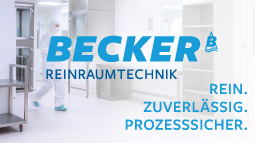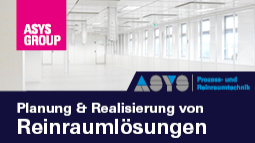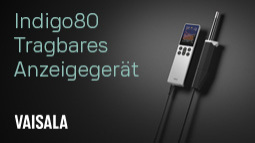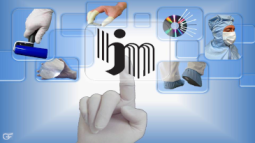- Trade fair
Rapid.Tech – Concentrated Expertise in Additive Manufacturing
Know-How and User Focus Generate Excitement at Erfurt Conference and Trade Fair
The 11th Rapid.Tech in Erfurt, held on 14 and 15 May 2014, served to further expand the fair’s position as one of the leading international meeting points for additive manufacturing. Around 3,500 visitors from 20 countries caught up on the latest developments, trends and applications in the field during the two-day event. There were plenty of opportunities for this, with over 78 exhibitors in addition to 60 talks by renowned presenters from academia, research and industry. They all made one thing clear: additive manufacturing is a key technology of the next industrial revolution – and in some industries, this has already begun. The second Fab.Con 3D, Germany’s only professional consumer fair for 3D printing, was held to coincide with Rapid.Tech, running from 15 to 17 May.
Since 2004, Rapid.Tech in Erfurt has provided an opportunity for an intensive, hands-on exchange of knowledge across multiple industries for insiders and newcomers, researchers and users, as well as for manufacturers of equipment and materials used in additive manufacturing. This year’s event provided a unique offering of sessions relating to additive manufacturing (AM), including a user conference, a design engineers day and specialist forums in aviation, medical technology, and CAD/CAM and rapid prototyping in dental technology.
AM to Have Lasting Impact on Future Manufacturing
Lately, additive manufacturing processes have been making the transition from rapid prototyping technology to series manufacturing in more and more industries. In his keynote presentation, Dr Olaf Rehme (Engineering, Siemens AG) discussed examples of current implementation in industry and determined that the additive manufacturing process chain is knowledge intensive. He then expounded on the opportunities and challenges. Areas requiring further development according to Rehme include materials, component design rules, and the relationship between productivity and costs, as well as process monitoring and quality control. He concluded by highlighting the possibility that, in the future, products could be stored in databases rather than in warehouses. “Additive Manufacturing – A Game Changer for the Manufacturing Industry?” – this was the question tackled by the second keynote speaker, Dr Bernhard Langefeld of Roland Berger Strategy Consultants. Based on the results of a current study, he demonstrated that ongoing development of AM into a process for series manufacturing has led to the establishment of a new value creation chain for materials, development and contract manufacturing. The total market volume, approximately 1.7 billion euro in 2012, is expected to quadruple in the next ten years. This predicted growth also includes the increased use of high-tech metal components manufactured via additive processes. According to Langefeld, reasons for this include expectations of higher print speeds, for example as a result of using multiple and more powerful lasers, as well as optimised beam control and lower costs for metal powders. This, combined with the flexibility and other advantages of additive manufacturing processes, makes AM a key technology for producing high-performance components, shortening development processes, increasing manufacturing flexibility and bringing Industry 4.0 to fruition. The next two keynote presentations dealt with innovative solutions for AM. Dr Oliver Keßling presented a new industrial process for additive manufacturing with the ARBURG Plastic Freeformer (AKF). It can be used to produce highly complex components from series-production plastics. Friedemann Lell of Sauer GmbH/DMG Mori Seiki talked about the Lasertec 65 AM, an innovative solution for additive manufacturing in finished-part quality. This hybrid solution is the first in the world to combine additive laser deposition and a full-fledged 5-axis milling machine in one system.
User Conference – New Technologies
As AM use in series production continues to grow, so too does the selection of processes, methods and machines. The 13 presentations at this year’s user conference provided a detailed overview of this. Vasyl Kashevko of the Institute for Machine Tools and Factory Management (IWF) at the Berlin University of Technology presented a newly developed test for investigating the design limits of additive manufacturing processes. This test makes it possible, when using new materials, to gauge the scaling options and manufacturing limits of various design characteristics with the materials used in selective laser melting. Christian Polzin, University of Rostock, presented a new 3D printing process for producing ceramic moulded bodies from aluminium oxide and silicon carbide. Both base materials find wide application in the field of technical ceramics: aluminium oxide is used to produce items such as inserts or sintering aids, while silicon carbide is used to manufacture burner elements or plain bearings, among other things. Other presentations dealt with subjects such as 3D screen printing, which is used to manufacture miniaturised components on a large scale, as well as the innovative and environmentally sound technology of eColouring, open source hardware, new printing technologies and software developments. User reports were also on the agenda, including one by Theresa Swetly of BMW AG Munich, who reported on the possibility of using additively manufactured components for the purpose of securing components in the vehicle cockpits of the Bavarian automobile manufacturer.
Design Engineers Day – Possibilities and Limits of Additive Processes
One of the biggest advantages of additive manufacturing is the nearly unlimited freedom of design that it affords. At the same time, this freedom presents one of the greatest challenges for designers. Designing components for additive manufacture has its own set of rules, and these were the subject of the eight presentations at the design engineers day on 15 May 2014. The presentations covered topics such as the expansion of the scope of previously developed design rules for various boundary conditions involved in laser sintering, as well as the development and design of a metal structural component for racing cars by means of FE-aided optimisation of the topology for additive manufacturing. Alexander N. Steiner of netfabb GmbH presented an innovative software solution that enables the computer-based development of structures of any complexity, based on patterns from nature. The subsequent additive manufacturing step produces components that have new properties solely as a result of changing the structure of known materials. Fabian Riß of the Fraunhofer Institute for Machine Tools and Forming Technology (IWU) presented a new design approach for the load-oriented design of sandwich construction components. The method makes it possible to fit honeycomb structures to a free-form surface, and to adapt them geometrically, in accordance with load requirements. Combined with additive manufacturing, the lightweight construction potential can be better utilised in comparison with conventional manufacturing. Other functions can also be integrated at the same time, such as optimised cover-layer bonding and reduction of the telegraphing effect.
AM – Great Potential in Aviation
AM technology has already been used productively in some areas of aviation. Stephan Eelman of The Boeing Company made this clear in his presentation. He provided an overview of the essential fields of application of additive manufacturing at the world’s largest aircraft manufacturer, and presented a selection of examples. He then used these examples to explain the requirements and challenges involved when transferring the various manufacturing processes and materials from rapid prototyping to series production of aircraft components. Alexander Altmann of Liebherr Aerospace Lindenberg GmbH presented a new approach for producing hydraulic valve blocks for use in aviation by means of the selective laser melting (SLM) process. He showed the results of a study in which weight savings of up to 55 per cent were achieved in comparison with conventionally manufactured components while maintaining comparable performance and comparable production costs. Among the topics covered at the two-day event, which included a total of 13 presentations, was the European joint research project RepAIR: twelve institutions, headed by the University of Paderborn, are working together to study the potential of additive manufacturing in aircraft maintenance. Partners such as Boeing and Lufthansa Technik are testing holistic application scenarios with regard to maintenance and repair processes while taking into account topics such as certification requirements in the aviation sector as well as economic aspects and influencing factors involved in additive manufacturing. There were also presentations on the possibilities opened up by a new software function for the design of grid structures, which enables the special advantages of AM to be tapped.
New Possibilities for Individual Solutions in Medical Technology
Additive processes are also becoming increasingly important in the field of medical technology. This was demonstrated by the twelve presentations to the two-day specialist forum on medical technology. Paulo Bártolo, University of Manchester, presented trends in tissue processing, referred to as biomanufacturing. Professor Uwe Gbureck, University of Würzburg, talked about the production and active-ingredient modification of ceramic implants and scaffolds with complex shapes by means of 3D powder printing. First, he showed that bioceramics made of calcium phosphate or magnesium phosphate cements are suitable as bone replacement materials because of their similarity to the mineral phase of bone. Next, he dealt with the modification of these structures using active ingredients such as antibiotics or additives that promote healing. He then talked about the 3D printing of calcium phosphate-based replacement bone and the post-processing of 3D-printed, ceramic bone-replacement structures. Ronny Hagemann of Laser Zentrum Hannover presented a process for the selective laser micro-melting of platinum-iridium alloys. The material is preferred for biomedical implants such as pacemakers because of its unique biological and electrical properties. In tests, the process was able to create reproducibly homogeneous layers that were fully and materially bonded to the substrate material. One lecture series also covered practical clinical applications for additive manufacturing. In this series, Dr Philipp Fürnstahl, University Hospital Balgrist, illustrated that additive manufacturing has arrived in the operating theatre. The hospital has already seen surgical operations on 100 patients planned in 3D and implemented successfully using patient-specific templates.
3D Advances in Dental Technology
Digital technology is taking giant steps toward becoming established not only in dental practices, but also in dental laboratories. The specialist forum on CAD/CAM and Rapid Prototyping in Dental Technology saw twelve presentations dealing with the current state of the art and latest developments. Emidio Marco Cennerilli of EGS S.r.l. reported on the latest trends in digital dental medicine as well as on currently available technologies. He also explained how the latest digital technologies can optimise communication between the dentist, the patient and the laboratory. Dr Sascha Cramer von Clausbruch, of Wieland Dental + Technik GmbH, compared the optical and mechanical properties of fully ceramic systems (leucite glass-ceramic, lithium-disilicate glass-ceramic and translucent zirconium dioxide), which have the advantage of being suitable for the digital production of monolithic restorations. Dr Anna Jacobi of the Jacobi, Fendt & Kollegen dental practice shared initial clinical experiences with the Replicate system. The procedure was explained in the presentation. One special feature of the procedure is that the patient-customised implant is planned and designed before extraction, using DVT imaging and a digitisation of the clinical pre-treatment situation. The root-like implant is fitted with a customised zircon abutment and is inserted in the existing alveolar socket immediately following extraction.
New Experiences
This year’s Rapid.Tech was full of new ideas, not just in the specialist forums, the user conference and the design engineers day, but also in the exhibition hall. EOS GmbH, for example, chose Rapid.Tech as the venue for the world début of its new metal system, EOSINT M 290. “Our participation in the trade fair has been very successful in the past. That’s why we decided to present the new machine here live, and the interest has exceeded our expectations by a long way,” reported Stephan Wein, Area Manager at EOS. Exhibitors at Rapid.Tech have also detected an increase in demand for metal machines. Among those profiting from this was Frank Borkenhagen, Sales Manager Germany at Praxair Surface Technology GmbH: “Our metal powders for thermal spraying can for the most part also be used for laser sintering. That’s why we decided to exhibit at Rapid.Tech for the first time. We have encountered a high level of interest and are very pleased with our participation in the trade fair. For that reason, I am certain we will be exhibiting here again in 2015.”
Messe Erfurt GmbH
99094 Erfurt
Germany








